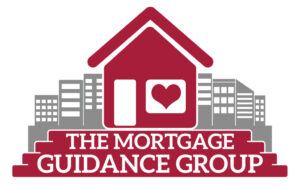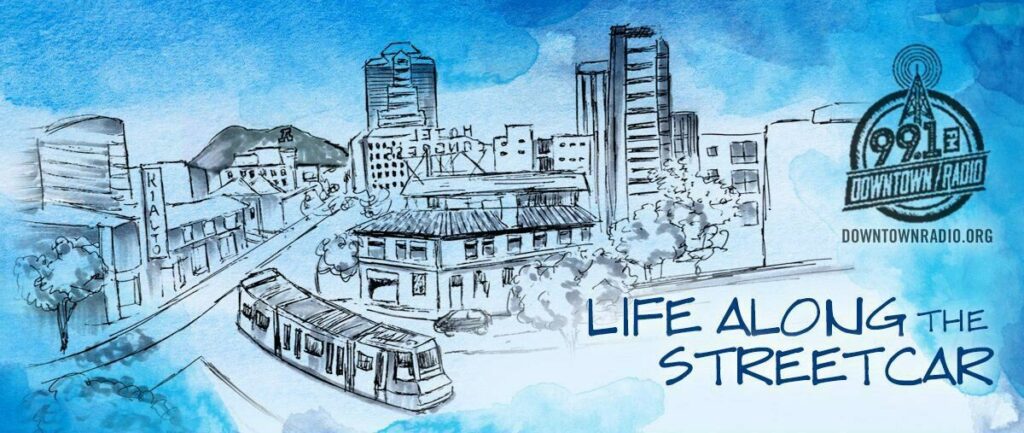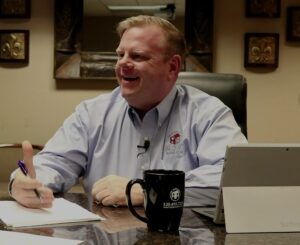Tom Heath
Good morning. It’s a beautiful Sunday in the Old Pueblo. You’re listening to KTDT Tucson. Thank you for spending a part of your brunch hour with us on your downtown Tucson Community sponsored rock and roll radio station.
Tom Heath
This week, we’re going to speak with Herman Harris and Randiesia Fletcher about their Innovative approach to sustainability, food security and affordable housing. It’s a model that could lead to Big improvements in the urban core.
Tom Heath
Today is March 7th. My name is Tom Heath. You’re listening to Life Along the Streetcar. Each and every Sunday, our focus is on social, cultural and economic impacts in Tucson’s Urban core and we shed light on hidden gems everyone should know about. From A mountain to UArizona and all stops in between, you get the inside track right here on 98.1 FM streaming on Downtown Radio dot org and always available on your iPhone or Android by using our very own Downtown Radio Tucson app, which you can get from Or respective app stores on the show.
Tom Heath
Our email address is contact at Life along the streetcar you can head over to Facebook if you want to interact with us over there and we invite you to check out our website Life Along the Streetcar.org for any past episodes. You can also get the podcast through Spotify iTunes or ask your smart speaker to play Life along the streetcar podcast.
Tom Heath
We’re going to start today with a little bit of a housing shortage. In my non real estate. I’m sorry my non-radio Days. I’m involved in the real estate and mortgage markets. I know you probably think the show is so successful that I can just maintain my living off the revenue but no, I do have to supplement that income by working a job during the week and it’s in the mortgage business.
Tom Heath
And with that I get to see a lot of up hand up close first-hand experience with people trying to purchase homes in this market and I’ll tell you what is a challenge. A lot of people are moving to Tucson, they’re relocating. It’s a great place to be and that creates a shortage of inventory which is making it difficult to get your hands on a home if you want to purchase it.
Tom Heath
We do have a lot of rental properties coming into the market. If you’re in the downtown area the Rendezvous Urban Flats, which we’re going to talk about here in a couple weeks. They just came online. The Flynn is close to being completed and just outside of downtown in that Broadway stretch known as the Sunshine Mile there have been proposals that that would allow for buildings up to 16 stories tall if they were be used for housing and ideally affordable housing.
Tom Heath
State law prohibits mandating affordable housing in these projects, but you can certainly incentivize developers to do so. We’re going to keep an eye on that because the Sunshine Mile just outside of downtown while it’s not quite on our street car path, certainly is going to influence the downtown and urban area. So again in a few weeks, we’re going to have the folks from Rendeveux to talk about their project. We’re going to keep an eye on what’s happening over at the Flynn, Sunshine Mile and these other projects that are coming online. There’s actually quite a few might do a show just on those development stories.
Tom Heath
But today our Feature Presentation is really about affordable housing in a different approach. A few weeks ago, we had Mike Peel from local first, Arizona and you talked about the success that the Scale-Up program was having and he mentioned one specific project, actually mentioned several but one that caught our attention was a project by Herman Harris and Randiesia Fletcher. It’s a combination of affordable housing, sustainability, food Security, Financial Security, it’s a it’s a really interesting project that they are working on.
Tom Heath
They’re in Phase 1, Phase 2 of this project at the moment. And once it’s completed this concept of the urban Forest that they are working on is really going to create a blueprint for how you can use small spaces in the urban core to facilitate sustainable, secure, affordable housing opportunities. It’s an interesting partnership and we spoke with Herman and Randiesia by Zoom a few weeks ago and I got to tell you their story is quite amazing. They’re are amazing individuals and we actually have turned this into a two-part segment. So today we are going to hear about Section 1 which is really their background, why they’re doing what they’re doing and a little bit about the project. Next week, we’re going to talk about some of of the advanced details of the project as well as the funding and opportunities to support. So I hope you enjoy this interview. I surely enjoyed speaking with Herman and Randiesia and they are really good assets to here have here in Tucson.
Randiesia Fletcher
My name is Randiesia Fletcher. And this is my husband Herman Harris jr. And we are the founders of the Urban Forest Project. And this project’s goal is to reduce the heat island effect by a 20 to 50% in urban areas by providing sustainable low-income housing, by Building green Walls, green spaces, and edible food Forest so that our clients that live on the property don’t have to spend as much money on grocery bills.
Randiesia Fletcher
So everything is just a nibble on the property and then they’re their light bill and they’re all the energy bills are less expensive because the way that we’re building our properties with Morrison’s energy star and so their energy bills are way lower, that’s keeping the cost of living lower.
Tom Heath
We came across this project through an interview we did with Mike Peel and the scale up program with local first. And then that’s kind of what he was talking about your efforts as one of the successes that they’re building on we’re going to get into that project is that it’s just, the impact in the potential for for the urban core is tremendous. Before we before we dive into the project. I got to know a few things about the two of you because you’ve got an interesting background you’re from opposite ends of this country and yet you come together, you want some California, once your Pennsylvania end up in Tucson changing the way people are going to live in the future. So, how does this happen?
Herman Harris Jr.
Well, I can start, I’m really from the city called Chester Pennsylvania, it’s very small City suburb of Philadelphia. I spent the first 19 years of my life there. After that, I joined the service the Army spent almost 10 years in the service, 4 active, 6 National Guard, did one tour overseas in Iraq and Kuwait and my National Guard service was out here in Tucson. Me and my daughter came out here and that’s kind of what we made our home with my father. He had lived here and from there never never went anywhere else never made it back home.
Herman Harris Jr.
And about what I came out here in 2001 and I met my wife here in 2015-2016 something like that. We went to the same church. And then we it was funny. We had a conversation on Mother’s Day and asked her what she wanted and she said well, you know, like applying say something to do things that I said that reminds me my mother and then we just had a conversation about day it just kind of took off from there. The story of why we do what we do is when I was very young. My mother was a victim of domestic violence. So we spent some time in the homeless shelter and you know being being moving from place to place and whine about lights and worrying about food and worrying about safety.
Herman Harris Jr.
When I bought my first house that was a huge concern of mine that I would never sell it. I always wanted to be for you know, battery sheltered women or you know, single single parents, single mothers of children and always wanted to go to something like that. But when I linked up with my wife and she’ll tell her story, both of our stories class last and so our hearts from where from what we do more traumatized us that you will were very closely linked. And so we decided if this is what we’re going to do we can make a business out of it and support our people and do something great and ensure that not only us but our family never experience is what will we have to go through as children. And so that’s kind of what started this whole project of what we do and do.
Randiesia Fletcher
And I came out of Los Angeles and as a young child I think about Five years old my mom and the dad that I grew up with my stepdad, but I’ll consider my stepdad both were heavily addicted to crack cocaine. And so we ended up downtown Los Angeles on Skid Row. We experienced bouts of homelessness up until I was a teenager, and then we need you to certain areas and Los Angeles roof where it’s replete with drug violence, drugs and violence. And still we were very much so housing and secure, food insecure, financially insecure. So it was just a dangerous space because the ramifications for children who experience such things are are our great, you know from second generational homelessness and just lack of education and that and just mental health issues as a whole and so Like I still have a brother here on the streets here in Tucson actually he came out here but he’s mental health issues are are challenging.
Randiesia Fletcher
My mom is very much so transitional and she called recently and she’s she’s on the streets and my brother, older brother is Transitional as well. He’s in a hotel. So it’s just we weren’t really able to get it together as a family and there was no time where there was fruits and vegetables and fresh things for first, you know, we got food boxes. We got unhealthy foods and we were able to eating truly grateful but still seeing our family and that’s not just my siblings, but I’ve had nieces and nephews who experienced the same insecurities in their lives. This it seems ridiculous, but it’s generational. So this is generational poverty.
Randiesia Fletcher
And so when I initially started my my doctoral work it was on it. Change people’s mindset and their way of life and their surroundings, will they be able to change? And sometimes they do and sometimes they don’t. I change but my brothers and my mom they’re still kind of out there still, so it’s stressful to know when you get that phone call.
Tom Heath
Yeah, they can only imagine and it’s interesting is what I first heard about the project and they heard the term sustainability. I looked at it strictly from an energy type of of a perspective of sustainability. But what you’re really talking to is is a life sustainability of Financial Security, food security, safety or addressing all this out that’s fixing them adressing all this stuff is really sustainable. So can you give me an overview of first of all the the Urban Forest concept and then let’s talk about what you’re currently doing and then what you plan to be doing.
Herman Harris Jr.
Yeah, so original leader of the urban Forest concept was just to take housing take house that we already had or take a house that we already had and then we rebuild it in such a way where you know, you didn’t have to pay $275 for electric. Utilize it in such a way where you know, you didn’t have to pay, you know, 75 – 80 dollars for a water bill. And so that was that was just the initial premise of what we were what we were doing and then from there, once we link that with Mike in in the Scale Up project, they introduced us to you know, well, not only can you use the building materials, but they you can utilize what you already have so you can plant the trees and and then how do you do that?
Herman Harris Jr.
And you have can you re utilize all the resources that you’re already having? So if you’re utilizing eating user For multiple systems and so that was really just the original premise of the urban Forest just taking housing and making it affordable for people like us which you know didn’t always have money or didn’t always have food or couldn’t always afford certain things or struggling with Health Care had a lack of Education like every strike that was against them.
Herman Harris Jr.
It was just it was just another barrier to them. Just living just a normal healthy just you know so-called American lifestyle, so that was the original the original idea what we were trying to do.
Randiesia Fletcher
For me, I’ve been a planter for a long time and I’ve been experimental artist planting as I call it. So I’ve been looking for ways to grow in the desert and so like we have you know, I’ve tried with water ponds growing in water ponds, and I’ve done that I do that. I have aquaponic system and also grow in the ground. And and grew in some planters on the patio as well. So investigating those four ways of planting and being able to eat basically what I planted and being able to feed my family off of it. It has saved us money.
Tom Heath
Well, we are in really what’s a part 1 of a four-part segment with Herman Harris and Randiesia Fletcher about their Urban Forest sustainable housing, affordable housing, food security project and We mentioned this is going to air today of part 1 and 2 and then 3 and 4. Will Air next week. Well, I want to remind you that you are listening to Life along the streetcar on Downtown Radio 99.1 FM and available for streaming on Downtown Radio dot-org.
Tom Heath
All right, we’re going to get back to our second segment here with Herman and Randiesia, talking about the Urban Force concept before the break, got a lot about their history why this is so important to them and some of the ways that they are working on it and we’re going to pick it up here with Randiesia talking about the different ways in which she is growing food on the project site.
Randiesia Fletcher
Different waves is because one way may not be sustainable for someone else. So one person they have a patio and may need to plant in pots. Somebody to plant indoors by using a whole fish tank and some buckets and just do some people plumbing and then other people like the whole idea of just having a water fountain on their little patio and they could just put some fish in there. And so I have some fish in there and so the fish fertilize the pond, fish fertilized aquaponics. I used the water from the pond to feed the plants and so on. Feed the plants it stood up. Sorry. All right, gotta feed the plants feed the cats feed everyone.
Randiesia Fletcher
But in order to make things grow the best way they can and then teaching other people. Hey, you can grow this too. We have some beautiful greens and radishes right now and I have sugar cane growing in my pond right now. So sugarcane I went in Purchase some sugarcane for Food City chopped it up. My kids really upset that I chopped up sugar cane up do it in the pond, but you really and now we get planning.
Tom Heath
Your reference on a couple of occasions the farm. Is that where your you are now, is that what is that what you’re working on now or where are you doing all of this work?
Herman Harris Jr.
So a lot of the things that we start are currently here at our new home address and then we’ll take those and if they begin to work and we can we can see it as a part of the The Phase 1 and 2 project of the Urban Forest. We then take them from here and go over there and set up over at the urban Forest headdress. And then we actually have two gentlemen that it currently there that day. A huge part of their culture is to cultivate from the ground and to grow things and to into already be sustainable to a certain level. And so we take it we bring it over there. We plant it for them and then they just kind of maintain it and take care of it. So we’ve already started on a low level on the low level the urban Forest project but we have you know, you’ll soon find out is very much bigger than small plants and outside cultivating them. Vegetables and things like that.
Tom Heath
Let’s talk about that. Let’s talk about the new project a new location. You don’t have to give the specifics at this point if the location but tell us a little bit about what you’re attempting to do in these first couple of phases and where you see this project, you know it a couple of years down the road.
Randiesia Fletcher
Okay. So so within the first we’re in Phase 1 and Phase 2 you actually so things one has been rehabbed the house is over there and make sure everything is energy efficient. We have intercourse ins toilet putting aerators on the faucets and showerheads where we need support in regards to changing the windows out to energy-efficient Windows could definitely a huge deal to say Some energy we’re changing the light fixtures along to in order to accommodate better Lighting in there. Also, the air conditioner we’re looking to get some support with a heat pump. So we definitely need that as we do that. We already have a plan through watershed management for the outline of the forced. And so it has all the space in the trees go we have the Shrubbery pop cycle is advertising for us this Week and hopefully we’ll get some donations with some edible trees and shrubs.
Randiesia Fletcher
So we don’t just want any old tree. We want edible trees and shrubs. So people can go out there and now they go out there and pick they can make meant they make mint tea. They have fig trees over there. They have collards and radishes and peas. They also have peas over there. There’s a variety of cactus that they can cook over there as well. So that would be like the first and second phrases, but the land is big enough. For us to build so couple years down the line we want to be able to build that three types on four-plex. If we do the for clasp Lex to go up the triplex would be able to do a two bedroom one bedroom and a studio and we want to be able to offer that housing to people who were in situations like we were in be able to provide them what bike rack next to the bus stop, shade, food, energy efficient living so that they could keep their costs down while they live there. And so that’s very very important for us. Yes to grocery stores across the street, but why not have those collards instead of paying a dollar across the street for callards you have them right here in your yard.
Randiesia Fletcher
So that’s our long-term goal is to continue to build a housing project another housing project next to the one there on that land. We want to be able to replicate this as well because it’s important the model that we’re creating like you were talking about to be able to move that their Or to downtown and there’s lots of space available for us. We just want to be able to plant the trees to do it.
Tom Heath
In the location where you are now, if I remember correctly you were saying there is no vegetation. There are no trees. This is like a just an empty space. Really.
Herman Harris Jr.
Yeah. It was originally one tree there when we first bought the house, but it ended up dying due to a lack of Lack of being able to be watered. So we had to actually cut it down and once we did that we realized how much it all it was shading half of the house that was already sitting there. And so you notice the difference in the usage of electricity trying to keep our electricity and gas trying to eat pool house. And so now it’s just basically a blank slate and we were blessed enough to have enough room to say, okay, we can not only renovate the house that’s there. Can not only build new construction there, but then we also have enough room to do all these sustainable things like utilize the runoff from the water cistern that watershed management created we have enough room that playing new edible trees and trees for shade we have enough area to put rechargeable stations and bike racks.
Herman Harris Jr.
So things that were, you know, instead of using a car you can either use the bike or user energy efficient vehicle things. Like that, where will we first started that those things weren’t even on our radar. It was literally just saving people money. But once we got connected with the right people scale up local first Mike pihl in those in and all his crew. They really opened our eyes to we can do so much more and so we really took that idea and as their program says we scaled it up from from what we imagine to something that you know, I wasn’t even sure it was possible when you first started We just kept going and with everybody’s helping assistance is looking like it’s going to be a reality. So we’re really excited about it. It’s going to take some time. But we just keep plugging.
Herman Harris Jr.
Well keep plugging away. That is Herman Harris or also speaking with Randiesia Fletcher via Zoom a couple of weeks ago about their Urban Forest project as we’ve talked about a couple of times. This is a two-part episode. So you want to tune in next Sunday for the second half of this interview. Amazing people the really kind giving individuals that have a story that is remarkable. And their motivation is wonderful. Supported by Local First Arizona and others here in our community looking forward to hearing some more advanced details of that project next week it also ways that you can can jump in and help them.
Herman Harris Jr.
Well, my name is Tom Heath. You were listening to Life along the streetcar on Downtown Radio 99.1 FM and available for streaming on Downtown Radio dot-org. Well we are Wrapping up here episode number 141. This is the first half of our project segment on the urban Forest. I have second half of next week. So I hope you tune in for that. Also coming up. We’re going to keep with the housing theme and talk about the Rendezvous Urban Flats.
Herman Harris Jr.
That’ll be coming up in two weeks as we have the the folks. They’re talking about that new project and the local contributions from the developers and owners and as though we round out April we have Ashley LaRussa on March 28, talking about her Endeavors through events and Black’s Friday. There’s a big event coming up on the 31st that will be excited to share with you. So that will be coming up in a few weeks. So March is pretty well packed with fantastic guests and I’m excited to speak and share their all of their all of their stories. Well, you might be in the know you’re listening to a hyper local show. So if there’s something out there that You think is a Hidden Gem something that the rest of us should know about shoot us a note.
Tom Heath
You can get us at contact at Life along the streetcar dot-org. We’re on Facebook. It’s really pretty easy to get a hold of us. And if you do have a social media account and you’re highlighting things happening in Tucson, or you know, someone that is tagged us or share it with us on our Facebook page. We’d love to connect that audience with ours and continue this collaborative approach.
Tom Heath
Well, I’m excited to be in the Month of March because of all the guests that we have and I’m excited to be on Downtown Radio because of all of the phenomenal DJs and volunteers that we have. So head over to our Downtown Radio dot org website. Check out some really cool shows get some bios on these amazing DJs and maybe hit that support button because we are an all-volunteer station and your support really means a lot to us. Well, we have talked a lot about home today. So we’re going to leave you with a song. I hope it’s not too mainstream for downtown radios from a tick tock sensation Edith whiskers, sir. 2020 single called home. Have a great week and turn the next Sunday for more Life along the streetcar.




